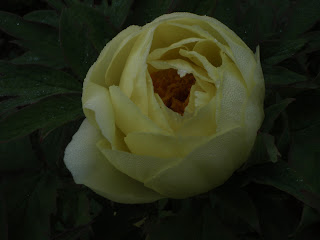2013年7月20日土曜日
2013年5月23日木曜日
2013年5月9日木曜日
Banchō Sarayashiki
Banchō Sarayashiki
Banchō Sarayashiki or Bancho Sarayashiis a Japanese ghost story of love separated by social class, broken trust and broken promises, leading to a dismal fate.
The story of Okiku and the Nine Plates is one of the most famous in Japanese folklore, and continues to resonate with audiences today.
The story of Okiku is an old one, whose true origins are unknown; however, it first appeared under the title Bancho Sarayashiki in July 1741 at the Toyotakeza theater. The familiar ghost legend had been adapted into a ningyō jōruri production by Asada Iccho and Tamenaga Tarobei I. Like many successful puppet shows, a Kabuki version followed and in September 1824, Banchō Sarayashiki was staged at the Naka no Shibai theater starring Otani Tomoemon II and Arashi Koroku IV in the roles of Aoyama Daihachi and Okiku.
A one-act Kabuki version was created in 1850 by Segawa Joko III, under the title Minoriyoshi Kogane no Kikuzuki, which debuted at the Nakamura-za theater and starred Ichikawa Danjūrō VIII and Ichikawa Kodanji IV in the roles of Tetsuzan and Okiku. This one-act adaptation was not popular, and quickly folded, until it was revived in June 1971 at the Shimbashi Embujō theater, starring the popular combination of Kataoka Takao and Bando Tamasaburō V in the roles of Tetsuzan and Okiku.
The most familiar and popular adaptation of Banchō Sarayashiki, written by Okamoto Kido, debuted in February 1916 at the Hongō-za theater, starring Ichikawa Sadanji II and Ichikawa Shōchō II in the roles of Lord Harima and Okiku. It was a modern version of the classic ghost story in which the horror tale was replaced by a deep psychological study of the two characters' motivations.
Japanese Ghost Stories
Size: 8 ” x 11.5”
Pages: 124
Published: 2009
Price: $48
Binding: Softcover
WE MADE 300 LIMITED EDITION S/N HARDBACK EDITIONS AS GIFTS TO THE ARTISTS.
THE REMAINDER ARE AVAILABLE THROUGH THE WEBSITE WHILE SUPPLIES LAST.
Japanese Ghost Stories is the end result of a year long art project. It includes illustrations based on four different Japanese ghost stories, submitted by 62 unique international artists, including Jack “Horimouja” Mosher, Horimasa, Ade, Cody Meyer, Tim Kern, Horizaru, Horigyn, Hougen and more. The project was created to explore how Westerners approach old Japanese myths and legends, most of which are quite culturally diverse and unique. The artists were asked to adhere to certain elements of the story but ultimately were given creative license. The artwork submitted for the project was incredibly varied in terms of style and approach, making this a compelling collection of illustrations and an interesting look into how the western mind, as well as that of present day Japan, approach these antiquated tales.
2013年4月5日金曜日
2013年2月24日日曜日
Raijū
Raijū
Raijū (雷獣,"thunder animal" or "thunder beast") is
a legendary creature from Japanese mythology.
Its body is composed of lightning and may be in the shape of a cat, fox, weasel, or wolf.
The form of a white and blue wolf (or even a wolf wrapped in lightning) is also common.
It may also fly about as a ball of lightning (in fact, the creature may be an attempt to explain the phenomenon of lightning). Its cry sounds like thunder.
Raiju is the companion of Raijin, the Shinto god of lightning. While the beast is generally calm and harmless, during thunderstorms, it becomes agitated and leaps about in trees, fields, and even buildings (trees that have been struck by lightning are said to have been scratched by Raiju's claws).
Another of Raiju's peculiar behaviors is sleeping in human navels. This prompts Raiden to shoot lightning arrows at Raiju to wake the creature up, and thus harms the person in whose belly the demon is resting. Superstitious people therefore often sleep on their stomachs during bad weather, but other legends say that Raiju will only hide in the navels of people who sleep outdoors.
登録:
投稿 (Atom)






















































